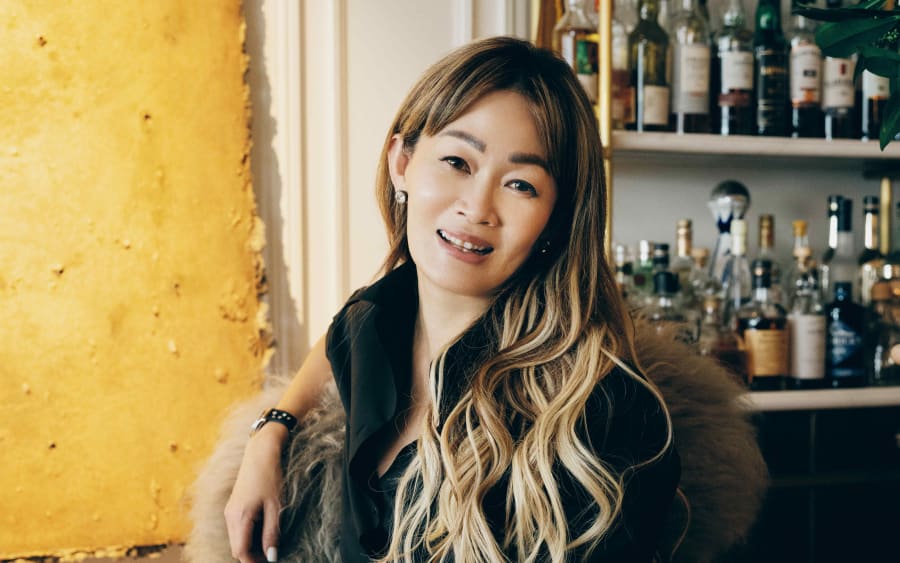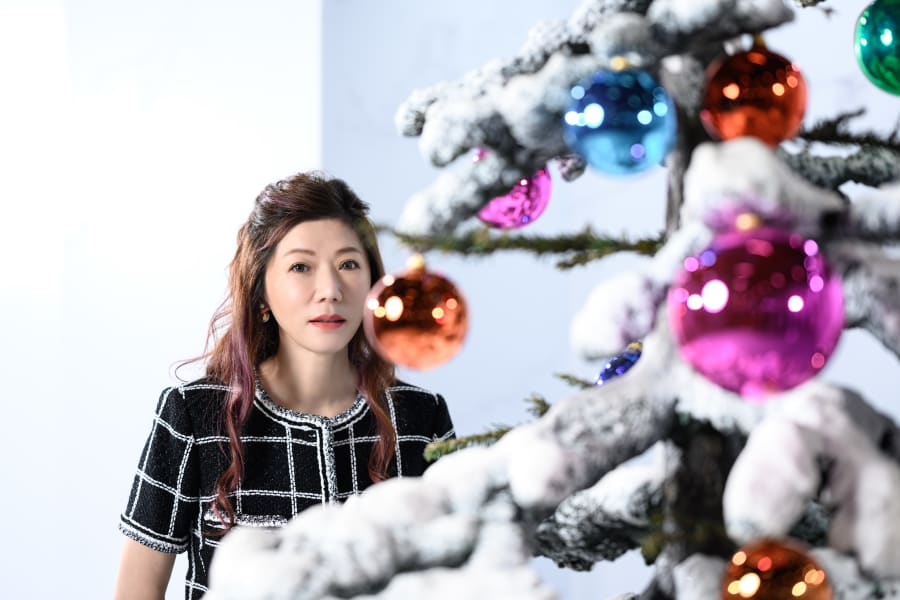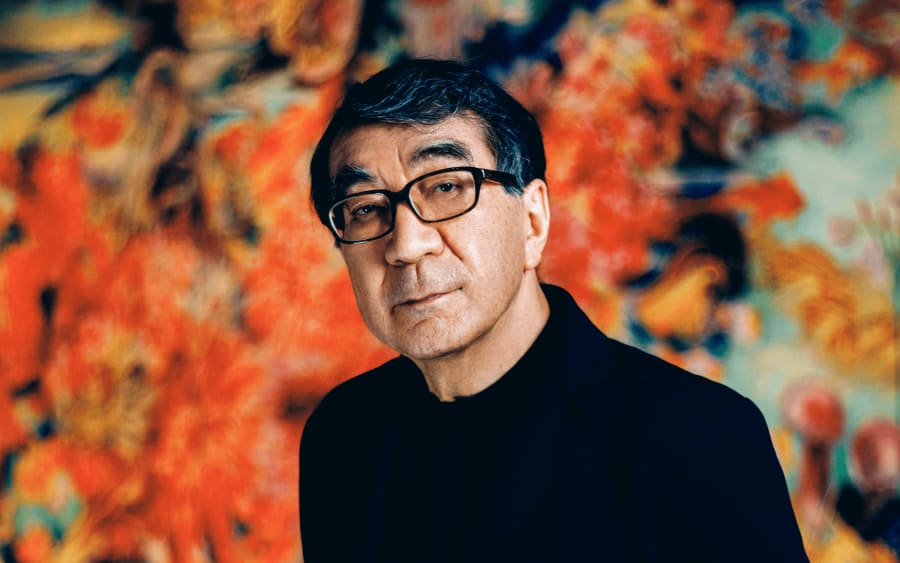Taipei-based Rudy Tseng recounts his path into contemporary art collecting. In this exclusive interview, he charts a journey that took him from collecting the Young British Artists to curating a biennial and supporting major institutions including the Tate in London and the Mori Art Museum in Tokyo.
In collaboration with Tatler China.
‘My career in media has offered me countless opportunities to engage with the art world. While working at Disney, I had the pleasure of meeting Eugene Tan (now the director of National Gallery Singapore), who introduced me to the Young British Artists (YBAs). This sparked my interest in contemporary art, and eventually led me to collect artworks by the YBAs.
‘I once came across Damien Hirst’s With Dead Head (1991) in London, a photograph of the artist posing with a severed head. This image left me deeply curious. 20 years later, it remains etched in my memory.
‘Initially, my collection focused on Asian contemporary art. Over time, it started to include artists from around the world. I’m now less concerned about the nationality of the artists, and instead focus on the creative depth of their works.
‘A pivotal moment in my life occurred on New Year’s Eve in 2005, when I resigned from Disney. I resolved to pursue the life I truly desired – living in different cities for at least 3 months a year to immerse in the local art scene. I started with New York, where I stayed for 5 years, cultivating relationships with museum directors, curators, artists, and collectors. I’ve also lived in Tokyo and Berlin. In recent years, I spend a lot of time between Paris and London.
‘Although I used to be a fan of Hermès, luxury items no longer hold the same significance for me. I’ve made lifestyle changes to focus on art collecting. When visiting Art Basel Hong Kong, I opt to fly economy, and stay in a four-star hotel opposite the venue.
‘Before Art HK was acquired by Art Basel, I was already a regular visitor. One year, shortly before the Hong Kong fair, my father passed away. On the first evening of the week, I visited William Lim’s office for Firenze Lai’s exhibition opening. Her works were priced very low and quickly sold out, but I wasn’t in the mood to look closely or to purchase anything. Little did I know that several years later, I would have a chance to buy a piece through Zhang Wei of Vitamin Creative Space.
‘My list of artists to watch includes Danh Vo. I have been an avid follower for quite some time. One of his notable pieces is We The People (2010-2014), a 1:1 replica of the Statue of Liberty in 250 individual thinly-pounded copper pieces.
‘Taiwanese artist Joyce Ho’s video work, such as her eight-channel video installation Vera X Diary (2023), is characterized by a profound sense of spatial awareness and theatricality. Ipeh Nur, hailing from Yogyakarta, Indonesia, is also on my radar. She has already participated in major shows including the Biennale Jogja, Taipei Biennial, and Sharjah Biennial. Lastly, Amol K. Patil from Mumbai, India, explores the deep-rooted caste system, and the conflicts among new immigrants. He conveys these societal realities through his evocative paintings and sculptures.
‘I feel fortunate enough to have made a lot of friends through my love of art. For instance, I met Lee Mingwei in 2009 when I bought his work The Mending Project (2009). Since then, we’ve shared art and travel experiences, forging a lifelong friendship.
‘Mami Kataoka, the director of the Mori Art Museum in Tokyo, often stayed at my home during her visits to Taiwan in the early years. Her guidance was invaluable when I curated the Dojima River Biennale in 2013. She not only introduced me to hundreds of artists in Kyoto, but also assisted with translation and communication.
‘After joining Tate’s Asia-Pacific Acquisition Committee and Mori Art Museum Best Friends, fellow collector Leo Shih was the first person I reached out to. I’m also a close friend of Jenny Yeh, who jokingly refers me as her “art world husband.” I’m a trustee of Winsing Arts Foundation, which she founded. I contribute creative advice for exhibitions and projects there. We frequently attend events, travel, and visit Art Basel fairs together.
‘I have always seen collecting not just as an investment, but as a genuine passion. I once sold a painting by Sanyu at a remarkably low price. Originally acquired at auction for approximately USD 28,000, I sold it for USD 83,000 a decade later. Today, its estimated value stands at over USD 3 million. Yet, it doesn’t matter much to me, as I reinvested the proceeds in numerous other new artworks.
‘I have both short-term and long-term plans for my collection. I’m considering organizing exhibitions, in particular my extensive collection of video works by Taiwanese artists. I also want to continue expanding my collection and I’ll continue to focus on emerging artists. By acquiring artwork in the primary market, I ensure that at least half of the proceeds go directly to the artists, which is the best way to support them.
‘Looking further ahead, I may eventually pass my collection down to my two nephews, who both share a passion for art. One of them made a noteworthy acquisition debut during Art Basel Hong Kong several years ago with Kwan Sheung Chi’s Everything Goes Wrong for the Poor Couple (2010). He also introduced me to Firenze Lai. In the future, I may opt to entrust my collection to them or donate to institutions. I’m not entirely sure about what my legacy will be, it’s not the right time to think about that just yet.’
This article is part of a year-long collaboration between Art Basel Hong Kong and Tatler China, originally titled ‘The Collector’s Gaze’.
Published on April 26, 2024.
Caption for the full-bleed image: Rudy Tseng. Photography by LIN Yueh-Hung. Courtesy of Tatler China.


